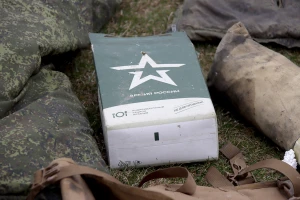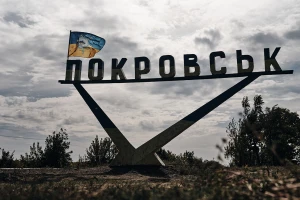
Russian troops cause communication disruptions in Kherson region before blowing up Kakhovka HPP — OC South
Natalia Humeniuk, OC South spokeswoman, said that before the Kakhovka HPP dam was blown up, Russian troops did not even inform their own units in the Kherson region
Humeniuk stated this during the telethon.
“The enemy deliberately concealed the situation, putting people at risk. They attempted to isolate the group, causing communication failures and neglecting to inform their own units,” according to her statement.
Numerous Russian soldiers are stranded in floodwaters, with some seeking refuge on rooftops and begging for help.
Humeniuk further mentioned that there is a chance for improved communication in the near future: "It is now possible to gather information using certain communication channels, particularly through aerial reconnaissance."
The situation in the south of Ukraine after the Kakhovka dam explosion
On June 6, occupying Russian forces blew up the Kakhovka HPP, completely destroying it. Evacuation efforts have begun to move residents away from the flooded areas. After that, President of Ukraine Volodymyr Zelenskyy convened an emergency meeting of the Security and Defense Council, and the world began to respond to the tragedy. Follow the detailed course of events here.
Ukraine’s government allocated UAH 1.5 billion for the construction of two new water supply systems. These systems will help provide drinking water to Kryvyi Rih, Nikopol, and Marganets. Additionally, almost UAH 846 million has been provided to ensure the drinking water needs of the Kherson, Mykolaiv, Zaporizhzhia, and Dnipropetrovsk regions.
In his turn, Volodymyr Zelenskyy emphasized that the Russian Federation mined the HPP dam last year and Ukraine was ready for an explosion. Zelenskyy discussed the consequences of the dam explosion and the risks for the ZNPP with the head of the IAEA and invited him to Ukraine.
According to initial estimates by the Ministry of Agrarian Policy, approximately 10,000 hectares of agricultural land on the right bank will be flooded due to the destruction of the Kakhovka HPP.
On June 7, the Ministry of Health warned of the possible outbreak of cholera and the risk of botulism resulting from the explosion of the HPP. They advised Ukrainians to consume only imported or bottled water and provided other recommendations to reduce the risk of infectious diseases.
By 3:00 p.m. on June 7, a total of 1,752 people, including 103 children, had been evacuated to safer locations in the Kherson region.
Flooding was reported in four districts of Mykolaiv on Tuesday evening. The water level rose by 82 cm, leading to the destruction and flooding of bridges and gardens in the region.
In contrast, as of 8:00 p.m., 196 residential buildings were flooded in the temporarily occupied Hola Prystan, with the water level still rising. However, the Ukrainian police successfully rescued a woman and children who were trapped in a flooded house in occupied Oleshky.
The flooding in the Kherson region has already resulted in the loss of lives. The mayor of Oleshky, Yevhen Ryschuk, reported three fatalities in the city due to the floods.
Amid the flooding of the Kherson region, the Cabinet of Ministers of Ukraine created a Headquarters to eliminate the consequences of an emergency. And the European Union will send assistance to Ukraine, including filters, pumps, generators, and shelter equipment.
Turkish President Recep Erdogan believes that Ukraine should investigate the Kakhovka HPP explosion together with the Russians.
As of the morning of June 8, the average flooding level stands at 5.61 meters. 600 square kilometers of the Kherson region are under water.
- News














































